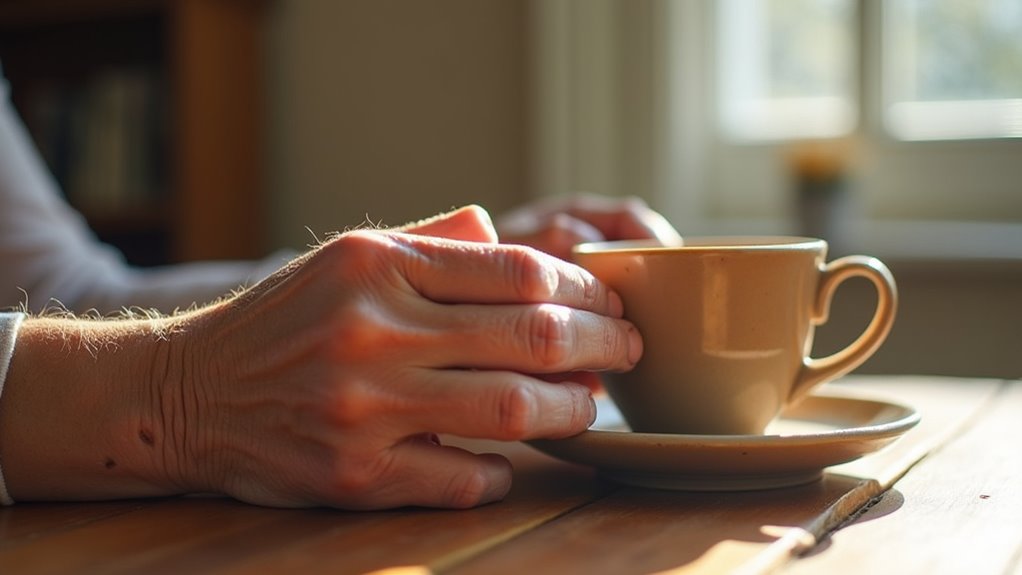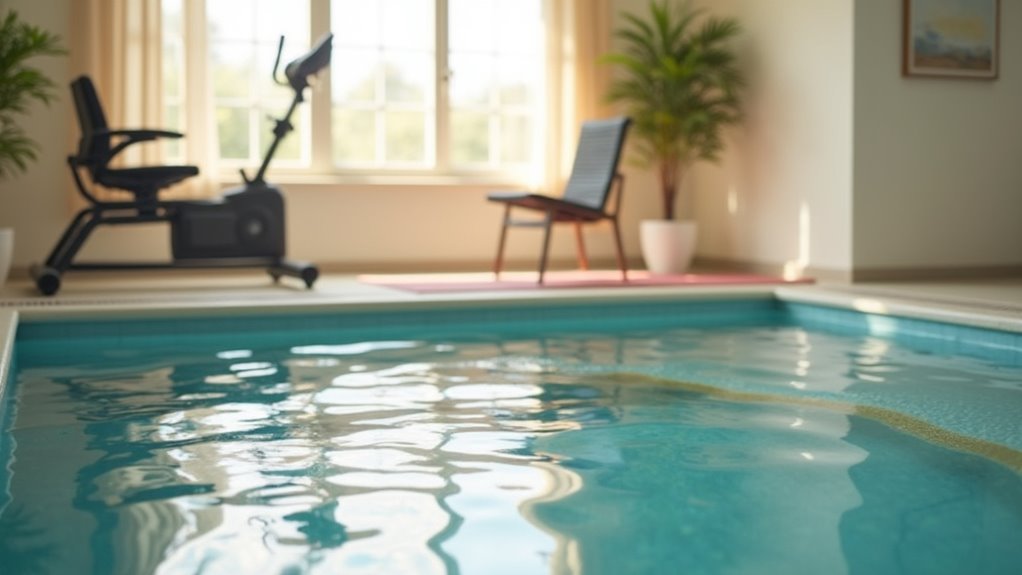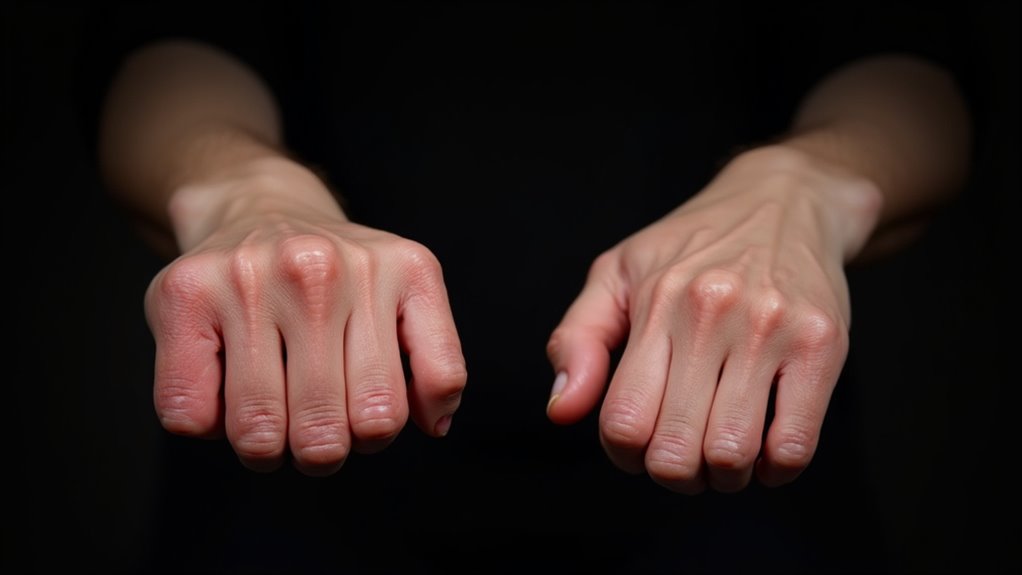Three gentle exercises can help manage your osteoarthritis without aggravating joint pain. Try backward leg lifts while lying on your stomach to strengthen knee-supporting muscles, bridge exercises to enhance hip stability, and modified chair squats that build leg strength without stressing joints. You’ll want to perform these exercises 2-3 times weekly as part of a detailed routine. Let’s investigate the proper form and specific benefits of each movement.
Backward Leg Lifts for Knee Support and Stability
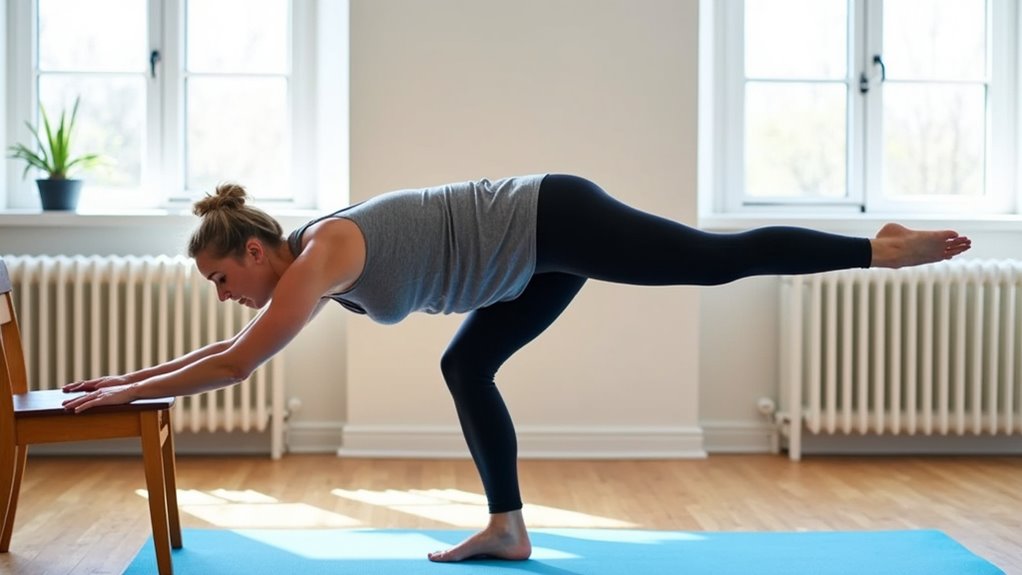
When you’re dealing with knee osteoarthritis, strengthening your quadriceps muscles becomes essential for joint stability and pain management. Backward leg lifts offer a low-impact solution that effectively targets these key muscle groups while helping to relieve discomfort.
To perform this exercise, lie on your stomach and slowly lift one leg straight back, maintaining control throughout the movement. Hold the position for a few seconds before lowering your leg. You’ll strengthen the muscles that support your knee joint, improving comprehensive stability and reducing osteoarthritis-related pain.
Start with a few repetitions and gradually increase both the number and duration of holds as you build strength. You can safely incorporate these exercises into your daily routine, making them an effective tool for managing osteoarthritis symptoms and enhancing knee function.
Bridge Exercises to Strengthen Hip Muscles
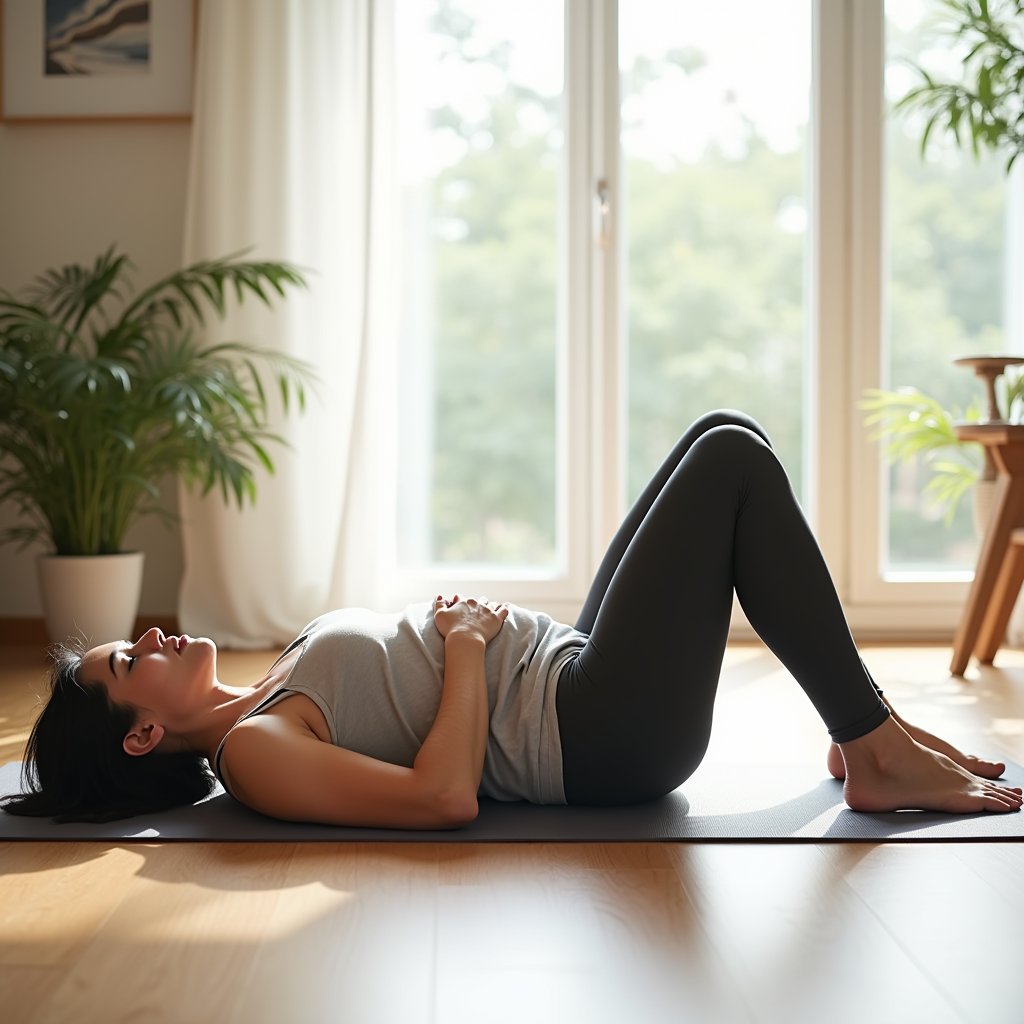
Although many people focus primarily on knee exercises, bridge movements play a crucial role in managing osteoarthritis by strengthening the hip muscles that support your knee joints. This exercise helps improve stability while keeping your leg muscles engaged, which can help relieve pain and boost overall knee function.
You can perform bridges on the floor or use a stability ball to increase difficulty as your strength improves. By incorporating bridge exercises 2-3 times weekly into your stretching exercises routine, you’ll build the support your knees need. Increasing physical activity through bridges is particularly effective because it allows you to control the weight and resistance based on your comfort level. Research confirms that regular bridge exercises, when done with proper form, provide a safe and effective way to manage osteoarthritis symptoms.
Modified Chair Squats for Joint-Friendly Strength
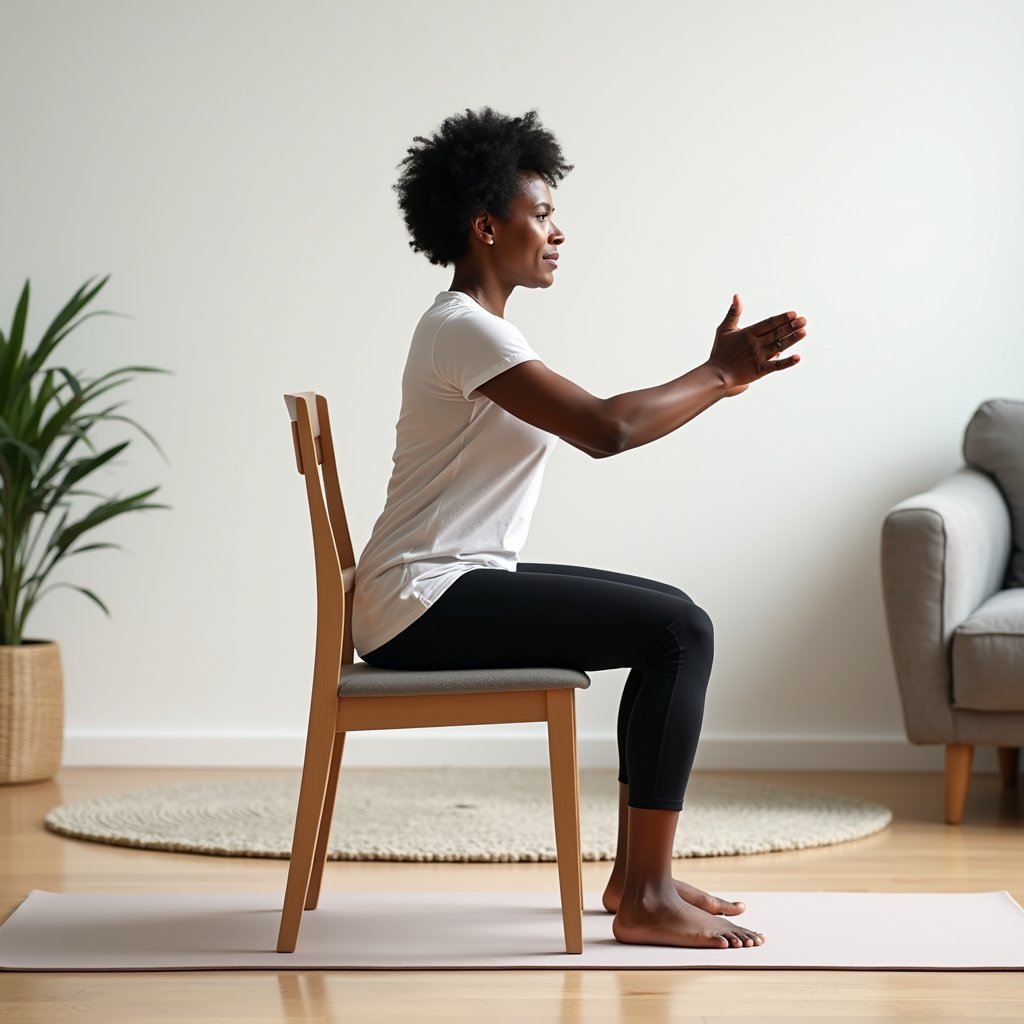
Modified chair squats stand out as an excellent way to build leg strength without putting excessive stress on arthritic knees. This exercise can reduce osteoarthritis symptoms while helping to strengthen your quadriceps and improve strength in your legs.
| Do This | Don’t Do This |
|---|---|
| Keep weight off painful joints | Lock your knees |
| Tap chair lightly | Sit completely down |
| Use chair for support | Rush the movement |
| Control your descent | Lean too far forward |
You’ll find that these strengthening exercises help improve your body weight distribution and muscle strength. To perform the movement safely, stand in front of a sturdy chair, lower yourself until you barely touch the seat, then push back up. Exercise may help reduce joint discomfort when you complete 2-3 sets of 10-15 repetitions, focusing on proper form throughout.
Frequently Asked Questions
What Is the Best Exercise for Osteoarthritis?
You’ll find that low-impact water exercises are often the best choice for osteoarthritis, as they combine resistance training with joint protection. They’ll help you strengthen muscles while the water’s buoyancy reduces stress on your joints. You can improve your range of motion and balance while managing pain effectively. When combined with proper activity modification and weight loss strategies, water exercises provide a thorough, detailed, and all-encompassing approach to maintaining joint health and mobility.
What Is the Glad Exercise Program for Osteoarthritis?
The GLA:D program is a structured exercise therapy approach that’ll help you manage osteoarthritis through joint-friendly workout modifications. You’ll participate in supervised sessions combining low-impact exercises, strength training techniques, and balance exercises. The program isn’t like an intense gladiator workout – instead, it focuses on gentle movements that improve your stability and mobility. You’ll learn proper form for cardiovascular activities, flexibility exercises, and weight management strategies through twice-weekly group sessions over 6-8 weeks.
How Do You Stop Osteoarthritis From Progressing?
You can slow osteoarthritis progression through several effective strategies. Focus on early stage prevention by maintaining healthy weight management and practicing joint-friendly workouts. Incorporate muscle strengthening exercises and low-impact activities like swimming or cycling. Don’t forget to include range of motion techniques in your daily routine. Lifestyle modifications, such as proper nutrition and activity modification tips, are vital. Remember, combining these progression-slowing methods with appropriate pain management approaches offers the best results.
How Do You Calm an Osteoarthritis Flare-Up?
To calm an osteoarthritis flare-up, you’ll want to focus on immediate joint inflammation management. Apply cold therapy for 15-20 minutes several times daily, and take over-the-counter anti-inflammatory medications as directed. Rest the affected joint while maintaining gentle movement. You can also consider consulting your doctor about corticosteroid injections for severe flares. Modify your activities to reduce joint stress, and follow your physical therapist’s guidance for appropriate exercises during recovery.

